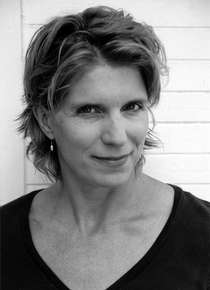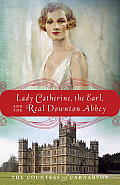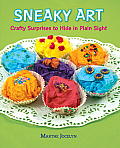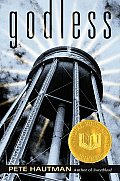Today I’m taking part in the WOW! Blog tour for author Marthe Jocelyn, who has written a book on how to turn everyday objects and experiences into opportunities to add art into your family’s life. The book is called Sneaky Art: Crafty Surprises to Hide in Plain Sight, and I’ll be featuring a full review of it tomorrow. As part of the tour, I’m giving away a Rainy Day Art Pack to one person who leaves a comment about art in the comment section below. Talk about why you feel creative or maybe reasons you’d like to feel creative if you don’t think you are. Anything about your experience with art is fine, just be sure to leave your comment by midnight (PST), Wednesday, January 22. (U.S. and Canadian residents only please.) Please note: The giveaway is closed. Congratulations to BN100 on winning.
Here’s a little bit more about the author: Marthe Jocelyn spent her childhood in Toronto reading books and putting on plays and circuses in her backyard. Marthe has a long string of jobs: theatre usher, cookie seller, waitress, photo stylist, even toy designer before she finally settled on writer. Marthe lives in Ontario with her daughters Nell and Hannah. Visit her at www.marthejocelyn.com.
For more on Jocelyn’s blog tour, visit WOW’s page kicking it off. And here’s her essay on why collage is such a great form of art to inspire creativity along with instructions on how to do it.
 Collage is a No-Fail Medium
Collage is a No-Fail Medium
Along with the sneaky art projects that I have made over the years, I have also illustrated ten picture books using the medium of collage. I am completely self-taught as an artist and not particularly able or confident when it comes to handling a paintbrush or even a pencil. My human and animal figures are awkward and disproportioned. When I included painted sketches of the Hannah character with my first hopeful picture book text submission, the art director was diplomatic but firm in her rejection. I was simply not an illustrator. Luckily, she had seen some of my toy designs; little people and creatures stitched out of patterned fabrics with simple embroidered faces.
“If you could capture the feeling of your toys in your pictures…”
I went home and cut a girl-like shape out of paper, about 18 inches high. I glued on a fringe of brown felt hair and a green-checkered flannel dress with big pockets. I made tiny dots for eyes and a single thin line for a mouth. I put her on a green paisley floor against a green corduroy wall. I carried her back to the art director who, amazingly, took a leap of faith and let me proceed as the illustrator for my own book.
This is maybe more intro than you need, but I want to make the point that collage works for those who do not consider themselves artists as well as for those with more experience and confidence. Kids are especially thrilled to make stuff using glue. The word ‘colle’ in French means ‘glue’ and glue is the key. You can even get away without using scissors, if you know how to tear paper or find bits and bobs that don’t require cutting. The best part about collage is that there are truly no rules – other than Try to Keep the Glue off the Furniture.
Even with no rules, however, it can help—when introducing primary-age kids to collage—to provide guidelines. I often suggest starting with a large oval, either cut or drawn, and let the first project be a face. Everyone knows what goes on a face; there is no moment of nervous despair facing a blank page. I highly recommend that every grownup involved also make a picture alongside the young artists (or even the night before in the case of a teacher in a busy classroom).
Move on from the face to dressing a body or designing a house or presenting a meal—familiar ideas that will become extraordinary and unique in the hands of each artist.
Below is a list of materials that are wonderful to have on hand when beginning to work in collage. Offering a wide range allows for the magpie glee of discovery—a red button amongst brown ones, an inch of striped ribbon, a scrap of paper the perfect shade of green. But if a feast of options is not possible, it can be enormously effective to make an entire picture using only the pages of a magazine or a single newspaper. Older kids will have plenty of ideas of their own.
After nearly two decades of classroom visiting, I have many observations about the approach to art and work habits of very young children all the way up to teens and adults, and plenty of thoughts about how gender affects the process too—worth more than a couple of sentences in a blog post. One thing that collage can teach girls—something that boys often know without knowing—that straying outside the lines makes for good art.
Get out the glue!
Technical tips:
Use a backing sturdy enough to hold the extra weight of applied layers. Even cardstock is better than paper. Cardboard is good and so is foamcore.
If you’re making a landscape or something with a background, apply that first, with smaller focal images on top.
Use less glue than you think you need, applied in dots for small things and spread evenly and right to the edges for larger pieces.
List of Materials for your collage box:
(I do not recommend glitter or precut decals or stickers!)
Wallpaper samples, magazine cut-outs, newspapers, old greeting cards, calendars, pages of discarded books, wrappers, receipts, maps, handwritten notes, tickets, photocopies of family photos, coloured paper of any kind, like origami or wrapping paper, brown craft paper, fabric scraps, doilies, netting, buttons, beads, trim, ribbon, lace, ribbon, braid, ric-rac, feathers, tassels, shells, twigs, pebbles, seeds, small craft sticks, toothpicks, yarn, string, embroidery thread, dental floss
Remember that collage is about making choices—and there are no wrong ones.
 England’s Highclere Castle has become widely known as the setting for the Downton Abbey series on PBS, with opening credits of each episode and interior scenes focusing on the grandeur of the historic seat of the Earl of Carnarvon. Yet the castle has a notable history of its own, a story told by Fiona, the 8th Countess of Carnarvon, in her book Lady Catherine, the Earl, and the Real Downton Abbey.
England’s Highclere Castle has become widely known as the setting for the Downton Abbey series on PBS, with opening credits of each episode and interior scenes focusing on the grandeur of the historic seat of the Earl of Carnarvon. Yet the castle has a notable history of its own, a story told by Fiona, the 8th Countess of Carnarvon, in her book Lady Catherine, the Earl, and the Real Downton Abbey.






